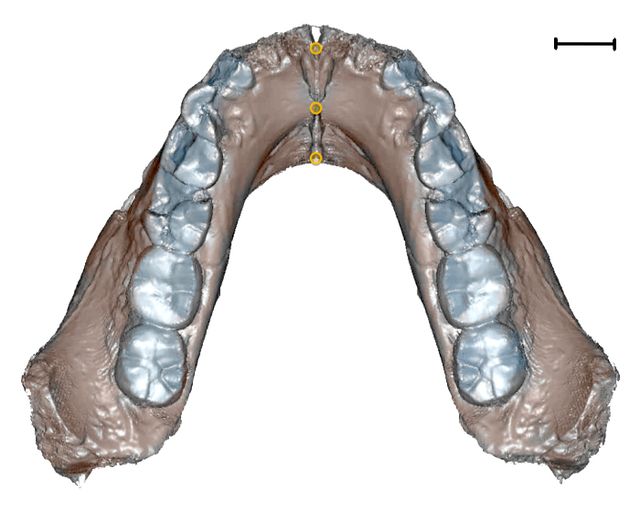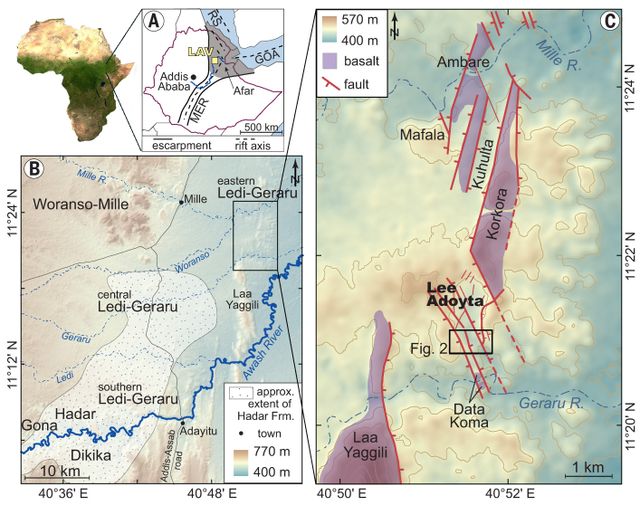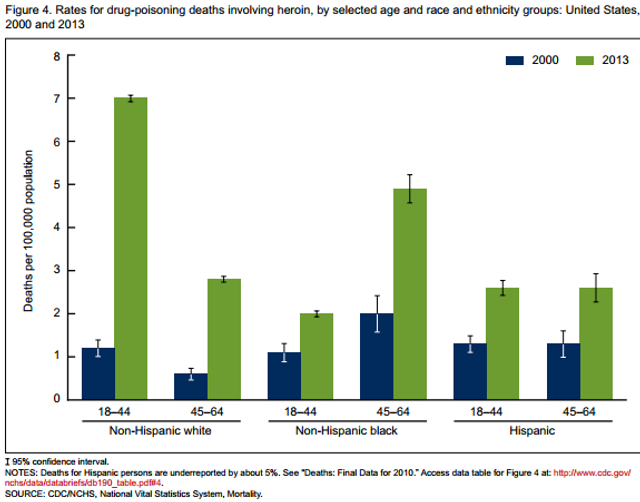Thomas H. Douglass
Scientists last week unveiled a new fossil jawbone from the Afar region in Ethiopia that extends the age of the human genus, Homo, back to 2.8 million years. The find is an exciting link between older hominins and our own ancestors who, only a few hundred thousand years later, would be manufacturing stone tools on a regular basis.
The bone contains critical anatomical features linking it to earlier Australopithecines as well as later fossils including Homo habilis. The fossil’s discoverers attribute the mandible, labeled LD350-1, to the Homo genus, which includes modern humans, or Homo sapiens. They have not specified, however, whether it should be considered H. habilis or perhaps belonged to another species.
LD-350-1’s discovery and publication in Science Express were made possible by collaboration between researchers in Ethiopia; at Arizona State, Penn State, and George Washington Universities in the United States; and at University College in London in the UK. Ethiopia has been the site of spectacular discoveries in human evolution, including the discovery ofAustralopithecus afarensis or “Lucy,” and more recently Ardipithecus ramidusand an infant Australopithecine from Dikika.
The LD-350-1 mandible
 The LD-350-1 mandible, right, pictured next to an Australopithecus afarensis mandible. LD-350-1 has been provisionally attributed to the genus Homo.
The LD-350-1 mandible, right, pictured next to an Australopithecus afarensis mandible. LD-350-1 has been provisionally attributed to the genus Homo.
The fossil, a left mandible fragment, includes the chin, parts of the canines and premolars, and the large molar teeth in the back of the jaw. Scientists attribute a range of features, including smaller canines, the orientation of blood vessel and nerve routes, and the shape of the jawline as characteristic of the earliest members of the human genus, H. habilis. But they note that other features of the chin, and of molar shape, are also consistent with Australopithecines like Lucy.
 The new mandible digitized and reflected to show what the complete jaw would have looked like.
The new mandible digitized and reflected to show what the complete jaw would have looked like.
While the fossil record in East Africa is rich prior to 3 million years ago (Ma) and after 2.5 Ma, the period between 2.5-3 Ma is poorly represented in the region’s sedimentary record, leaving evolutionary history during this time more difficult to reconstruct. This time period, however, is especially crucial for the study of early human origins because the first stone tools are found between 2.3-2.6 Ma, meaning that, presumably, early human behaviors were evolving during a time of sparser fossil records.
Lee-Adoyta, Ethiopia, 2.8 million years ago
LD-350-1 was found in an area only recently excavated, in Ledi-Geraru, a part of Ethiopia’s Afar region. The exact location of the fossil’s discovery in Ledi-Geraru, called Lee Adoyta, was described in a paper by geologist Erin DiMaggio and colleagues accompanying the description of the new fossil.
 The LD-350-1 mandible was found in the Lee-Adoyta region of Ledi Geraru, in the Afar depression of Ethiopia. The depression, a part of the east African Rift Valley, has yielded many spectacular fossils.
The LD-350-1 mandible was found in the Lee-Adoyta region of Ledi Geraru, in the Afar depression of Ethiopia. The depression, a part of the east African Rift Valley, has yielded many spectacular fossils.
Speaking to the World Socialist Web Site, DiMaggio described the research as “very interdisciplinary, collaborative and also international. Our team includes geologists, archaeologists, paleontologists, geochemists: this kind of collaborative work makes us more efficient in the field, and helps us make these kinds of discoveries.”
While today Lee-Adoyta is “a badlands with exposed sediments and a few acacia trees,” DiMaggio said, 2.8 million years ago it was a grassland and savannah marked by trees along changing river margins and lake shores.
DiMaggio and her colleagues found an abundance of grazing herbivores, a few forest-dwelling elephants, and hippo, crocodile and fish fossils from animals that would have lived alongside the ancient hominin. Coarse pebbles in the sedimentary record, wavelike structures in sand, and silty mudstones all suggest that Lee Adoyta was shifting between faster flowing rivers, slow floodplains and lakes margins over hundreds of thousands of years.
“Those changes are consistent with what we observe throughout the Afar depression during this period, but their relevance to the whole of east Africa isn’t clear,” DiMaggio said.
Many animal fossils at the time of LD-350-1, that is, 2.8 Ma, also appear for the first time or have replaced previous and now absent species, suggesting widespread ecological shifts in the region.
DiMaggio described understanding the fault structure of Lee Adoyta as especially challenging and interesting. “The whole area is faulted—with blocks of rock moving up or down—and so it took a lot of footwork, and Argon-Argon dating, to understand those faults.”
Though the geology of the region is complicated by regular rifts and faults, typical of the African Rift Valley overall, the researchers were able to firmly establish LD-350-1’s age through the presence of volcanic material in sediments above and below the fossil.
Early Homo prior to LD-350-1
Prior to LD-350-1’s discovery, the earliest specimens attributed to Homowere found in Kenya and dated to 2.4 Ma, with a host of other specimens found throughout east Africa, including in Ethiopia, shortly thereafter.
Sites along Lake Turkana in northern Kenya show sophisticated tool production techniques, a part of the earliest Oldowan stone tool industry, at this time. Even earlier stone tools have been found alongside butchered animal bones in Gona, Ethiopia, from 2.6 Ma, though the only hominin found nearby has been attributed to A. garhi, which possessed a chimpanzee-sized brain and other anatomical features typical of Australopithecines.
The evolution of A. garhi and H. habilis accompanied the evolution of a host of other hominins between 1.5-2.5 Ma in east and south Africa, including large-jawed species like Paranthropus aethiopicus, P. boisei and P. robustus, commonly called “robust” australopithecines, and other “gracile” specimens like A. africanus or the recently discovered A. sediba.
These species are thought to have evolved from older populations of A. afarensis who lived in east Africa between 3-4 Ma, through proliferating and diversifying with the expansion of African grasslands. A. afarensis are not known to have produced stone tools, though cut-marked bones suggesting stone tool use have been found near Australopithecines in Dikka, Ethiopia at about 3.4 Ma.
Isolated teeth with anatomical features intermediate between Afarensis andHomo have been recovered in sediments aged 2.5-3 Ma throughout east Africa in the past, but LD-350-1 is the first such fossil complete enough to demonstrate similarity to the genus Homo.
Further implications
No tools have been found alongside the fossil, and the absence of cranial bones, or bones from the rest of the skeleton, make speculation about brain size and other anatomical features impossible. While Australopithecines possessed the ability to both walk and climb in trees, and had chimpanzee-sized brains, later H. erectus specimens would evolve tall and slender bodies, larger brains, and trade their ability to climb for the ability to run, throw and manufacture sophisticated stone tools.
Overall, this discovery marks another triumph in the field of paleoanthropology, linking later human-like fossils with older bipeds like Lucy, and filling in the fossil record that connects our own existence to the natural world in which we live, and from which we evolved.
The intermediate character of the fossil also raises the possibility that a number of similar Homo-like lineages might have evolved between 2.5-3 MA, as other hominin species proliferated. Further discoveries almost certainly promise to clarify the relationship between LD-350-1, Australopithecus andHomo, not only from an anatomical but more importantly from a behavioral perspective.


